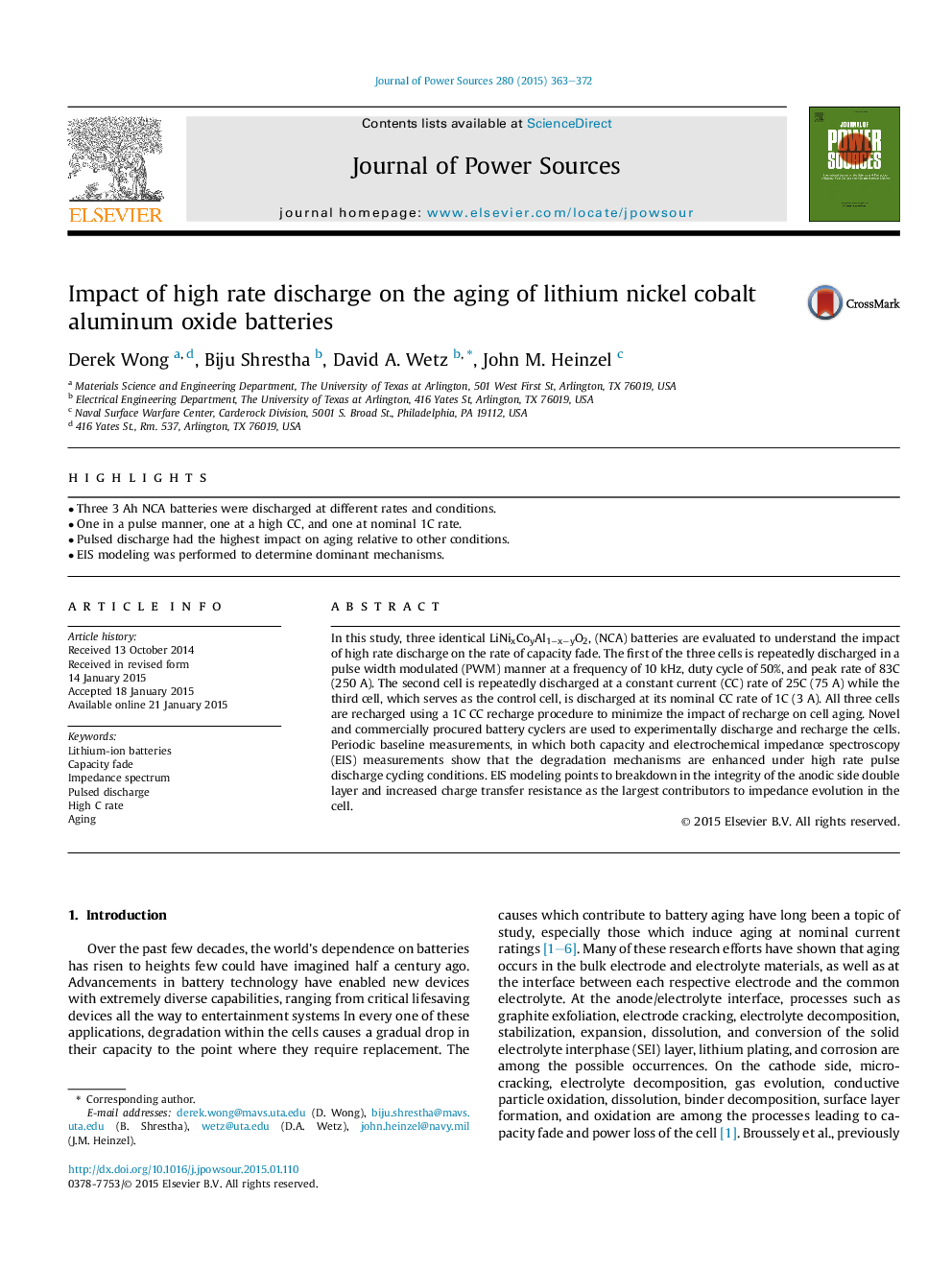| Article ID | Journal | Published Year | Pages | File Type |
|---|---|---|---|---|
| 7733508 | Journal of Power Sources | 2015 | 10 Pages |
Abstract
In this study, three identical LiNixCoyAl1âxâyO2, (NCA) batteries are evaluated to understand the impact of high rate discharge on the rate of capacity fade. The first of the three cells is repeatedly discharged in a pulse width modulated (PWM) manner at a frequency of 10Â kHz, duty cycle of 50%, and peak rate of 83C (250Â A). The second cell is repeatedly discharged at a constant current (CC) rate of 25C (75Â A) while the third cell, which serves as the control cell, is discharged at its nominal CC rate of 1C (3Â A). All three cells are recharged using a 1C CC recharge procedure to minimize the impact of recharge on cell aging. Novel and commercially procured battery cyclers are used to experimentally discharge and recharge the cells. Periodic baseline measurements, in which both capacity and electrochemical impedance spectroscopy (EIS) measurements show that the degradation mechanisms are enhanced under high rate pulse discharge cycling conditions. EIS modeling points to breakdown in the integrity of the anodic side double layer and increased charge transfer resistance as the largest contributors to impedance evolution in the cell.
Related Topics
Physical Sciences and Engineering
Chemistry
Electrochemistry
Authors
Derek Wong, Biju Shrestha, David A. Wetz, John M. Heinzel,
